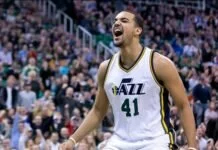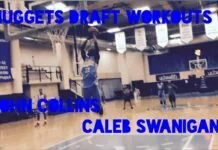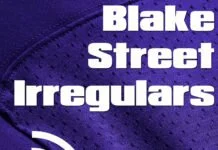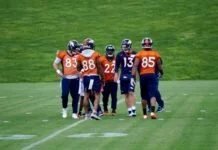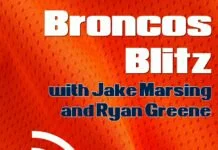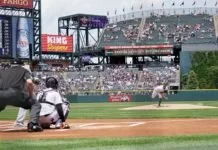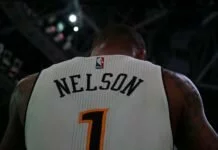In the first round of this year’s draft, the Broncos bucked the philosophy “best player available” and instead tried to fill a glaring hole at offensive tackle by drafting Garett Bolles. Yet, much was made at the time about how poor the talent of tackles in the draft was, including Bolles.
Since 1970, the first tackle has never been taken later than 20th. Since 1982, the first tackle has never stayed on the board past 15th. And since 2005, the first tackle hasn’t lasted past the 10th pick. Additionally, 2017 marks only the second time since 1990 that only a single tackle has been taken in the first round.
What is even more concerning, is that the free agent market for offensive tackles is extremely out of whack. During free agency, many teams handed out large contracts to what could only be described as mediocre offensive tackles.
One would expect that with such an out of whack free agent class would have prompted more teams to take a chance on questionable tackles in the draft.
Many fans and analysts are deeply concerned about Bolles, and understandably so.
Let’s take an in-depth look at the odds of success for the Broncos’ pick.
SUPERFORECASTING & HOW IT APPLIES
In Phillip Tetlock’s book, Superforecasting, he describes the method “Superforecasters” use when trying to make predictions, from anything from politics, to economic events, to sports. Superforecasters are amateurs who participate in prediction competitions, and who reliably produce remarkably accurate predictions, frequently beating “experts” such as CIA intelligence analysts.
When Superforecasters make their predictions, they often start with the base rate of success. This is typically a historical precedent that serves as a starting point. For example, when considering the plausibility of a startup business surviving 5 years, forecasters consider that 80% of businesses fail in their first few years. Thus, 20% is the base rate of success for new business, assuming success is surviving for more than a few years.
After the base rate is established, more details can be considered, including how realistic their business is, the owners track record, and the novelty of their ideas. These details may lead forecasters to adjust the odds of success up or down by small or large margins. Often, more detailed base rates of success can be obtained. For instance, it may be possible to determine success rates for specific industries.
Superforecasters don’t make absolute predictions, they assign probabilities to future events.
When trying to predict a player’s chance at success, or any other event in sports, a similar approach also works well.
In this example, I use this analysis to try and determine the odds of success for Bolles.
OFFENSIVE TACKLE SUCCESS BY DRAFT POSITION
Unfortunately, statistically evaluating the play of offensive lineman is extremely difficult. Few if any stats are kept for the lineman except for games started, and Pro Bowl/All-Pro honors. Pro Football Focus provides grades for each player, including offensive lineman, but these grades are only available for the past few years, are subjective, and are not easily searchable
To evaluate offensive tackles, the metric of at least 4 seasons as a team’s primary starter is a good metric. If a player reaches this threshold, it means teams have stayed with the player for multiple years and presumably, he was at least serviceable.
Additionally, the number of all Pro Bowl/All-Pro seasons help differentiate the top tier players. Unfortunately, this metric also has its limitations. The voting for these awards is still subjective and a bit of a popularity contest, and only a few players earn the honor every year. That means average starters, or above average yet less popular players appear the same as below average starters.
The table below compiles these stats for the 249 tackles drafted between 2000 and 2011.
| Round | Average Career AV | % Starter 4 years or More | % Pro Bowler | Average # pro bowl selections | % All-Pros | Average # All-Pro Selections | ||
| 1 (top 16) | 47.4 | 82% | 55% | 2.09 | 27% | 0.59 | ||
| 1 (bottom 16) | 35.3 | 60% | 10% | 0.40 | 5% | 0.05 | ||
| 2 | 37.6 | 60% | 23% | 0.43 | 10% | 0.10 | ||
| 3 | 28.4 | 50% | 6% | 0.22 | 3% | 0.06 | ||
| 4 | 24.3 | 24% | 12% | 0.38 | 3% | 0.12 | ||
| 5 | 12.8 | 6% | 3% | 0.06 | 3% | 0.03 | ||
| 6 | 11.4 | 6% | 0% | 0.00 | 0% | 0.00 | ||
| 7 | 10.8 | 5% | 0% | 0.00 | 0% | 0.00 | ||
WHAT THIS MEANS
Critics of the Bolles pick may point out that Bolles is not comparable to previous first round draft picks. They believe the talent in this year’s draft is significantly worse than other years, despite the increased need for offensive tackles. Critics believe Bolles only had second or third round talent.
Interestingly, the success rate for second and third round offensive tackles only drops off slightly. It appears that scouts are very good at evaluating the “sure bets” who usually go in the first half of the first round. However, once you move into back end of the first round and the second and third rounds, scouts and GMs lose their ability to predict success reliably. What’s more, in this tier of players, they seem to struggle to differentiate guys who are worthy of late first round picks, vs guys only worthy of a third-round pick.
So, the base rate suggests that a guy drafted between the second half of the first round and the end of the third round has about a 60% chance of being a starter for more than 4 years, a 10-15% chance of attending at least one pro bowl in his career, and a 5% chance of being voted first team all pro.
These are humbling odds, or “base rates of success.” Bolles has odds only slightly better than a coin flip for being a starter for more than 4 years.
HOW MIGHT GARETT BOLLES DIFFER FROM THE BASE RATE?
As mentioned, to get the most accurate prediction, one needs to decide how the specific situation compares to the base rate. In this case, that means evaluating whether Bolles is more or less likely to succeed than a typical first round draft pick
Unfortunately, this is a question without many objective answers.
Bolles is joining a team without any defined starters at tackle, and instead several players with serious question marks. Bolles will not be handed the starting job, but by no means does he have to unseat an incumbent.
The Broncos offensive line coach is Jeff Davidson. Davidson brings 14 years of experience as an offensive line coach. He does have some history of success at improving teams abilities to run the football
It’s hard to say any of these factors may Bolles more or less likely to see success than a typical first round draft pick. His easy path to a starting role will prevent him from being stuck on the bench, but he could also be forced into action before he is ready.
Playing on an already strong unit is probably what would be best for a rookie lineman, and while the Broncos may have some reasons to believe the unit will improve, it struggled mightily last year.
It’s hard to objectively say the Broncos coaching staff is better than average although there are reasons to be encouraged. The Broncos have struggled to develop tackles recently (such as Michael Schofield and Ty Sambrailo), but with a new coaching staff in place, that holds little weight.
Bolles himself is 25 years old, older than almost all other rookies. This could mean he is physically mature and will be able to jump into the pro game. But it also means that he was significantly older than anyone he went up against while he was playing in college, leading to a theory scouts overestimated his ability to overpower defensive lineman.
Taking all of these factors into account, Bolles appears slightly less likely to have success than his base rate suggests.
COMPARISON TO OTHER BRONCOS DRAFT PICKS
Former Bronco Right Tackle George Foster was also drafted 20th overall. He showed some potential at times, yet he only last 6 years in the league and was only a teams’ primary starter for 4 years, meaning he just missed my arbitrary cutoff for success.
Even though Foster achieved more than about 40% of offensive tackles drafted near his draft position, he still appears on lists of greatest Bronco busts.
Additionally, Orlando Franklin was drafted as part of Elway’s first draft in 2011 in the middle of the second round. Franklin started 63 out of a possible 64 games for Denver, including all 16 his rookie year, and has started 2 more years in San Diego (although he was moved to tackle after his third season).
By the metrics defined, Franklin appears to have done about as well as the average tackle taken in his draft spot. Yet Franklin still appears in articles discussing Elway’s mediocre draft record.
The lesson from these comparisons, is despite what past precedent shows, fans are going to expect a lot out of Bolles. Being an average left tackle will not be enough for Broncos fans. Being average is never enough here. Welcome to the your new home, Garett Bolles.



